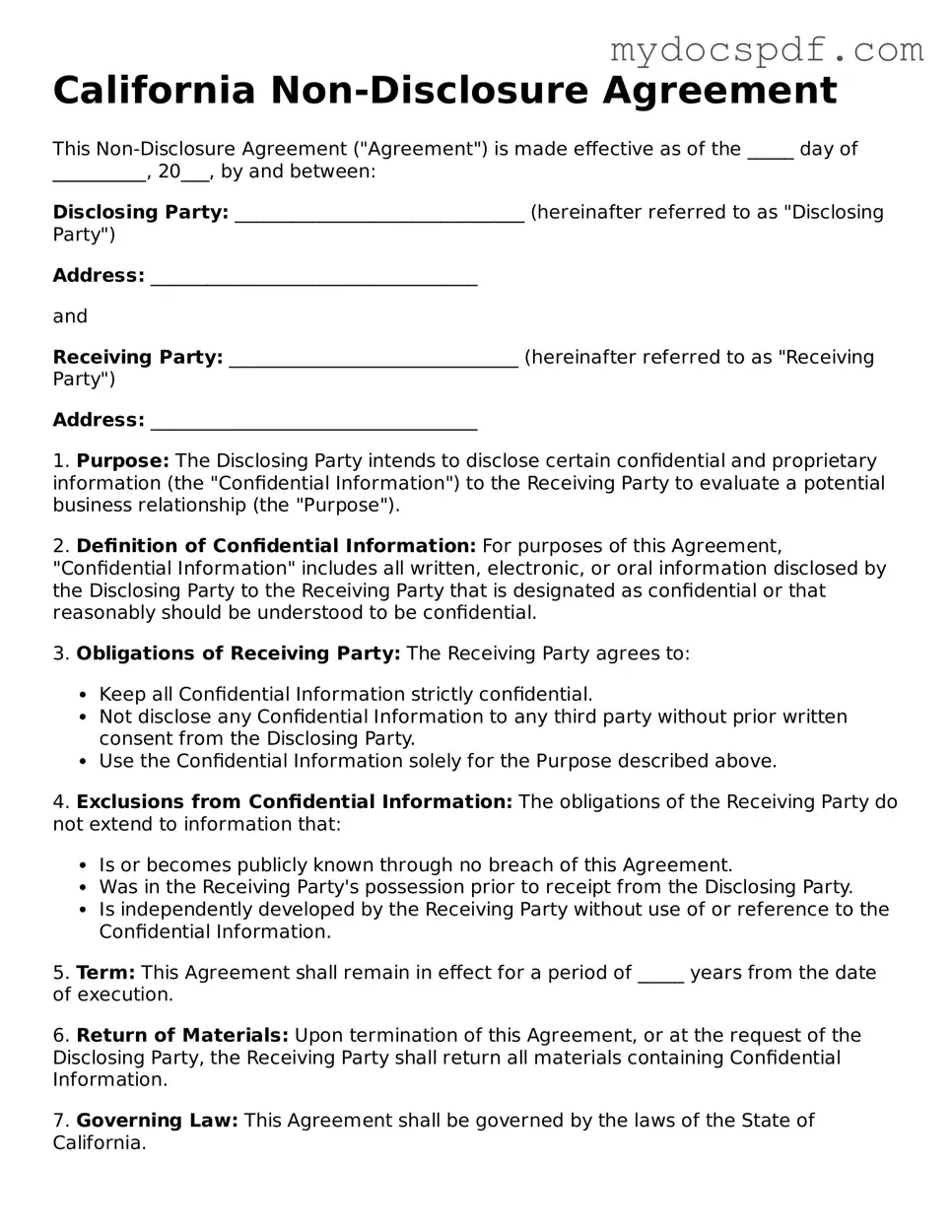California Non-Disclosure Agreement
This Non-Disclosure Agreement ("Agreement") is made effective as of the _____ day of __________, 20___, by and between:
Disclosing Party: _______________________________ (hereinafter referred to as "Disclosing Party")
Address: ___________________________________
and
Receiving Party: _______________________________ (hereinafter referred to as "Receiving Party")
Address: ___________________________________
1. Purpose: The Disclosing Party intends to disclose certain confidential and proprietary information (the "Confidential Information") to the Receiving Party to evaluate a potential business relationship (the "Purpose").
2. Definition of Confidential Information: For purposes of this Agreement, "Confidential Information" includes all written, electronic, or oral information disclosed by the Disclosing Party to the Receiving Party that is designated as confidential or that reasonably should be understood to be confidential.
3. Obligations of Receiving Party: The Receiving Party agrees to:
- Keep all Confidential Information strictly confidential.
- Not disclose any Confidential Information to any third party without prior written consent from the Disclosing Party.
- Use the Confidential Information solely for the Purpose described above.
4. Exclusions from Confidential Information: The obligations of the Receiving Party do not extend to information that:
- Is or becomes publicly known through no breach of this Agreement.
- Was in the Receiving Party's possession prior to receipt from the Disclosing Party.
- Is independently developed by the Receiving Party without use of or reference to the Confidential Information.
5. Term: This Agreement shall remain in effect for a period of _____ years from the date of execution.
6. Return of Materials: Upon termination of this Agreement, or at the request of the Disclosing Party, the Receiving Party shall return all materials containing Confidential Information.
7. Governing Law: This Agreement shall be governed by the laws of the State of California.
8. Entire Agreement: This Agreement constitutes the entire understanding between the parties regarding the subject matter hereof and supersedes all prior discussions, agreements, and understandings.
IN WITNESS WHEREOF, the parties have executed this Non-Disclosure Agreement as of the date first above written.
Disclosing Party:
Receiving Party:
